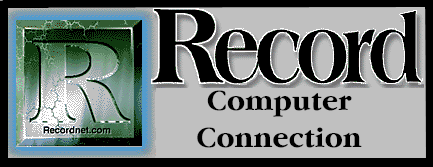

If you consider computer chips to be the brains of your PC, then surely the operating system must be the heart and soul. Without an operating system, your hardware and software simply do not know how to behave properly, if at all. Without an operating system, your PC would power up to a big nothing. The best equipment and programs cannot run without an operating system to act as the go-between and task master of all your components.
An operating system is commonly known as DOS, Disk Operating System. DOS is not a programming language, but rather sets of instructions that load programs, set up filing systems, allocate memory, control hardware and generally insure the safety of your data and system.
Though there are many operating system versions, the most common and widely used is MS-DOS, Microsoft Disk Operating System. Microsoft first introduced it's Version 1.0 DOS in 1981 and the PC revolution began. Now all manufacturers of hardware and software had a competitive, but even playing field with MS-DOS as the referee.
Since 1981, Microsoft has released 12 major revisions to it's DOS with 6.2 being the most current. Introduced in November 1993, MS-DOS 6.2 is a powerful and much improved operating system over earlier versions. Each successive release of MS-DOS has been friendlier with enhancements that insure your PC functions at peak performance.
To determine what version of MS-DOS you have, go to your DOS prompt. It looks something like this C:\> If you are in Windows, leave your Windows session by closing Program Manager. (Many DOS commands do not work while in Windows.) Now type VER (enter). MS-DOS will display your version number on the screen.
Some other basic housekeeping commands are also useful. Type CHKDSK to see a disk report of total space (in bytes), space used, space available, number of files and directories, as well as a memory message. Type MEM command to get a more detailed report of your systems memory configurations. Type DIR to list all the files in a directory.
If you have MS-DOS 6.0 you can type MSD (Microsoft Diagnostics) to see a list of all your components and their specs. If you do not have MS-DOS 6.0 or 6.2 on your PC, you really should consider upgrading as these latest versions have some pretty nifty features.
I think MemMaker is the strongest tool of the newer MS-DOS. By typing this command at the DOS prompt (C:\>) DOS scans your hardware and software then determines the best memory formula for your needs. It saves this configuration for you and makes the appropriate changes to your start-up files so your conventional memory is maximized. (Note: MemMaker will not run on 286 or older systems).
MSAV (Microsoft Anti-Virus) detects and cleans up any infections your system may have suffered. VSAFE is an early warning system that will sound the alarm of potential dangers to your PC. SCANDISK examines the surface of your hard disk and warns of possible damaged areas. In most cases, SCANDISK can recover affected files and move them to a safer locale.
Try using MSBACKUP instead of the old BACKUP command. MSBACKUP is an easier, menu-driven process to protect your precious work. Your back-ups can be customized to include all or selected files.
The much talked about DoubleSpace disk compression feature of MS- DOS 6.0/6.2 continues to cause fits for users and Microsoft as well. In theory, DoubleSpace increases the size of your hard disk by compressing your files. The reports from users, however, range from successful to system crashes with data corruption somewhere in between. Since losing it's patent battle with Stac Corp. in February, Microsoft will no longer be including DoubleSpace with it's MS-DOS releases. I think this bad boy is best left alone unless you are truly brave.
If it is still available, your best bet to upgrade earlier MS-DOS versions (5.0 & older) is to buy the book MS-DOS 6.2 Upgrade for Dummies, which includes the software and the DOS for Dummies Book. Version 6.21 of MS-DOS without DoubleSpace is due to be released this week, however at this point Microsoft has no plans to bundle this version with the DOS for Dummies book.
Despite it's few problems, I still think the MS-DOS is the best around for the average PC user. The more you understand your operating system, the more confident you will be in computing.